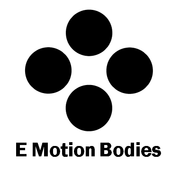The deepest reasons for dancing are often rooted in fundamental aspects of human existence, psychology, and culture. While individual motivations for dancing may vary, some of the deep and universal reasons include:
-
Connection with the body and with oneself: dance provides a direct and immediate connection with the body. It allows people to explore and express their physicality, fostering a deep connection between mind, body and soul. The act of dancing can promote self-awareness and mindfulness.
-
Transcendence and Altered States of Consciousness: Throughout history, various cultures have used dance as a means to achieve altered states of consciousness. Ritual and ceremonial dances, in particular, aim to transcend the ordinary and connect with the divine or spiritual realms.
-
Spiritual and sacred meaning: Many cultures incorporate dance into religious and spiritual practices. Dance is seen as a sacred act, a way to communicate with higher powers, express devotion and participate in rituals that transcend the mundane.
-
Symbolism and metaphor: Dance often involves symbolic movements and gestures. Through choreography and movement, dancers can convey complex narratives, emotions, and ideas. Symbolic dance can serve as a powerful form of expression and communication.
-
Catharsis and emotional release: Dance allows people to release and express repressed emotions. Rhythmic movement, combined with music, provides a channel for emotional expression and catharsis. It can be a therapeutic outlet to process feelings of joy, sadness or anger.
-
Community and social harmony: Group dances contribute to a sense of community and social cohesion. Dancing together fosters a shared experience, strengthens bonds between people, and promotes a sense of belonging and unity.
-
Creative exploration and innovation: Dance is a form of artistic expression that allows for creative exploration and innovation. Dancers can push boundaries, experiment with movement and create new forms of expression, contributing to the evolution of artistic and cultural practices.
-
Timeless rituals and traditions: Many dances have been passed down from generation to generation and have become timeless rituals and traditions. Participating in these dances connects people to their cultural heritage, offering a sense of continuity and shared history.
-
Embodiment of joy and celebration: Dance is often associated with joy and celebration. Whether in response to personal achievements, community victories, or life milestones, dance serves as a visceral expression of happiness and celebration.
-
Connection with universal rhythm: Dance is an ancient and universal human practice that takes advantage of the intrinsic rhythm of life. The repetitive and rhythmic nature of dance connects individuals to a broader cosmic rhythm, fostering a sense of harmony and interconnectedness.
In essence, the deepest reasons for dancing are intertwined with the human experience, encompassing spiritual, emotional, social and creative dimensions. Dance has the power to transcend the ordinary, connect people with profound aspects of existence and serve as a universal language of expression.
Enviar comentarios
Paneles laterales
Historial
Guardado
Contribuir
Share this post
Back to Noticias
- Choosing a selection results in a full page refresh.
- Press the space key then arrow keys to make a selection.
